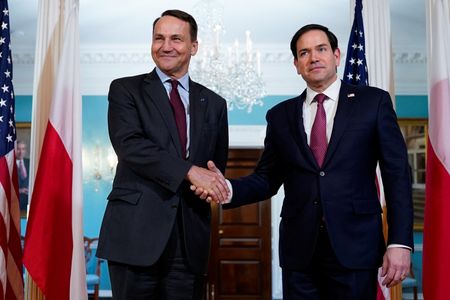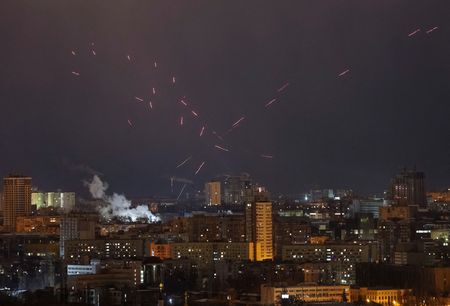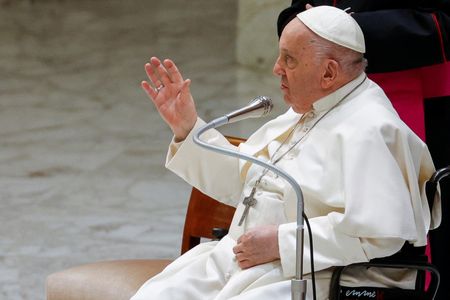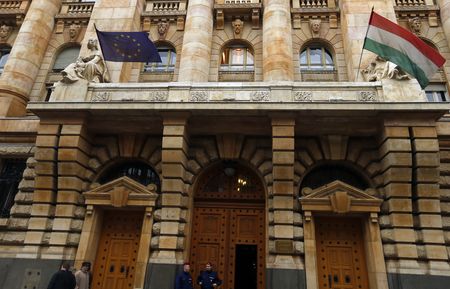By Jonathan Cable
LONDON (Reuters) – Euro zone business activity saw very tepid growth in February as demand fell at a faster pace and an expansion in services barely offset a long-running decline in manufacturing, a survey showed.
HCOB’s preliminary composite euro zone Purchasing Managers’ Index, compiled by S&P Global, held steady at January’s 50.2 in February, only just above the 50 mark separating growth from contraction.
A Reuters poll had predicted a small lift to 50.5.
“February’s flash composite PMI provides more evidence that, after expanding by only 0.1% in Q4, the euro zone economy remains all but stagnant in Q1,” said Adrian Prettejohn at Capital Economics.
“The limited country breakdown available at this stage showed a further modest improvement in the situation in Germany on the eve of its federal election. However, it was a very different story in France, where the composite PMI slumped.”
Business activity in Germany, Europe’s largest economy which contracted for a second consecutive year in 2024, picked up slightly, driven by a steady performance in services and reduced drag from manufacturing.
The country goes to the ballot box on Sunday to elect a new government – polls predict a conservative Friedrich Merz-led CDU/CSU win – and also faces economic risks from U.S. President Donald Trump’s tariff policies.
In France, the bloc’s second biggest economy, activity slumped much more than expected, its PMI showed, as new business and backlogs in the dominant services sector sharply declined.
Meanwhile in Britain, outside the European Union, firms are cutting staff at the fastest pace in more than four years ahead of a tax increase ordered by finance minister Rachel Reeves which has already prompted suppliers to jack up prices.
WEAK DEMAND
Overall demand in the euro zone declined for a ninth straight month and at a faster pace. The composite new business index dropped to 48.6 from 49.3 last month.
The PMI for the bloc’s dominant services industry fell to 50.7 from 51.3 in January, confounding expectations in the Reuters poll for an uptick to 51.5.
Demand for services fell and some of the activity was generated by completing previous orders. The services backlogs of work index dropped to 46.7 from 48.0, its lowest reading since late 2020 when the world was in the grip of the COVID-19 pandemic.
A PMI for the manufacturing industry which has been sub-50 for approaching three years did, however, improve to 47.3 from 46.6. The Reuters poll had predicted a more modest lift to 47.0.
An index measuring factory output that feeds into the composite PMI jumped to 48.7 from 47.1.
But optimism among manufacturers remained strong despite the threat of tariffs from U.S. President Donald Trump. The future output index dipped to 59.6 from 60.5 but remained above its long-run average.
(Reporting by Jonathan Cable; Editing by Toby Chopra)









